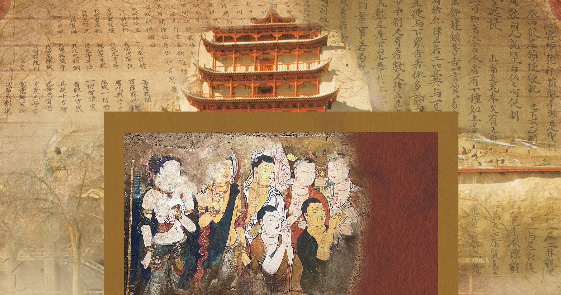Dates: June 15–16, 2023
Venue: University of Cambridge
Abstract:
This workshop is organized by the Faculty of Asian and Middle Eastern Studies, University of Cambridge, sponsored by Glorisun Global Network for Buddhist Studies and a personal donation from Prof. Zhan Ru. There were 11 attendees, who presented on aspects of Buddhist Texts and Manuscripts.
Summary:

Prof. Ann Heirman from Ghent University, presented a report entitled “The Buddhist Monasteries and (Their) Oxen from Daoxuan’s Vinaya Commentaries”. The subject of this paper is oxen and their complex relations with human beings, as discussed in the disciplinary texts. The main focus of her paper is Daoxuan’s interpretation of this principle in relation to the treatment of oxen, informed by his reading of Indian normative texts and his
own Chinese context. She considered that his guidance was complex, but he always attempted to remain true to what was—and remains—a central tenet of Buddhism.
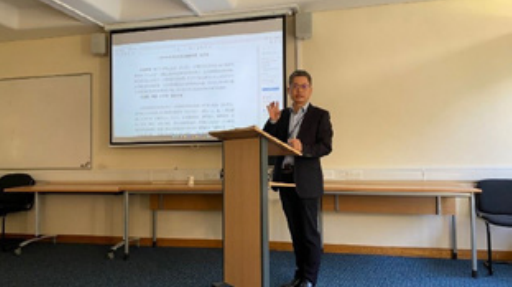
Prof. Ji Huachuan from Chinese Academy of Social Sciences presented a report entitled “An Analysis of the ‘Mind-Nature Theory’ in Early Chan Buddhism: Based on Evidence from Dunhuang Manuscripts”, his research bases on Buddhist historical records and Chan Buddhist texts from Dunhuang, discusses the “心性論” in background of early Chan Buddhist history, exploring its evolutionary development and distinctive characteristics.

Dr. Irene Lok from Chinese University of Hong Kong presented a report entitled “Guanyin Sūtra: The Method of towards the Liberation from Suffering”. She pays special attention to efficaciousness of Guanyin led to the promotion of the Sūtra, and the trace of the reasons how and why Guanyin belief spread quickly and widely in China and neighboring countries in Asia along the Silk Road.

Prof. Stefan Baums from Ludwig-Maximilians-Universität München presented a report entitled “The Arthapada in Gandhāra, Central Asia, and China”. The present paper gives an overview of various sources for the history of the Arthapada as it travelled from India along the Silk Road to China, discusses the transformations that it underwent in the process, and draws the conclusions on the earliest recoverable form of the text.
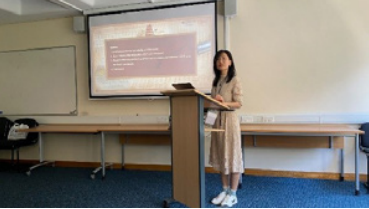
The presentation of Dr. Ma Yan from University of Vienna entitled “The Composition of Kamalaśīla’s Vajracchedikāṭīkā and Its Possible Relation to the Bsam Yas Debate”. Her paper is focusing on the hitherto unstudied *Vajracchedikāṭīkā, a commentary on Vajracchedikā, which is a sūtra authoritative for the Chinese Chan school, explores how the VChṬ can be read as a response by Kamalaśīla to the Chan positions which he encountered in Tibet.

Dr. Wang Jun from China Jiliang University presented a paper entitled “A Study of Chinese Manuscripts of the Dharmaguptaka-Vinaya before the Tang in Western China”. She bases on an investigation of the Vinaya texts found in the Chinese Buddhist manuscripts collected by the Otani Expedition in the Lüshun Museum, by comparing the earliest Dhamaguptaka-Vinaya texts from Dunhuang scrolls, explores the dissemination of the Chinese-translated Dhamaguptaka-Vinaya texts in China.
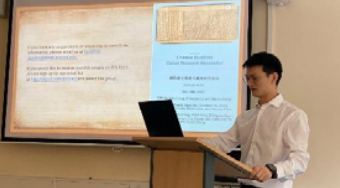
Dr. Zhang Xu from Chinese Academy of Social Sciences presented a paper entitled “Historical Tradition, Vinaya Masters and Political Intervention: The Establishment of Criteria for the Inclusion of Chinese Buddhist Canon in the Medieval Period”. In his opinion, in Early Medieval China, it was the Buddhist cataloguers who determined the criteria for its inclusion in the collection. However, secular political power gradually intervened in establishing the Buddhist canon, and imperial power interfered increasingly with the Buddhist canons, as evidenced by the censoring of the Three Levels Sect三阶教 and the inclusion of the emperor’s own works in the Song dynasty.
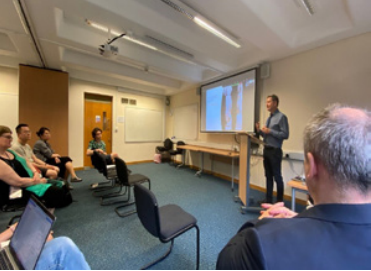
Prof. Georgios Halkias from University of Hong Kong gave a keynote report entitled “The Encounter of Hellenism with Buddhism: a Tale of Conversion and Cultural Diffusion”.By drawing on some historical, epigraphical, archaeological, and textual sources, he surveys evidence for the earliest contacts between Hellenistic and Buddhist cultures that facilitated the conversion of Greeks to Buddhism, and compliments the discussion by looking at the cosmopolitan environment of the Hellenistic world and the philosophical and spiritual commonalities shared by Buddhism and Hellenism.

Prof. Luo Mujun from Zhejiang University of Technology presented a report entitled “A Study on the Colophons in Dunhuang Chinese Manuscripts of the Diamond Sūtra”. Her study explores the following topics: Xuanzang’s translation of the Diamond Sutra, the state system of the Tang dynasty for producing copies of Buddhist scriptures, official titles, the 80-year-old man, the private publisher of block-printed books in Sichuan, the spread of and the belief in the Diamond Sūtra.
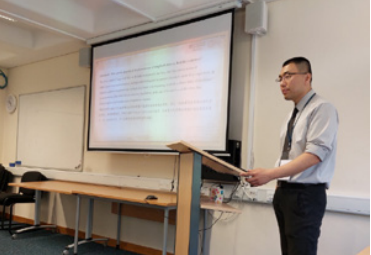
The presentation of Prof. Huang Wei from Harbin Normal University entitled “A Study on the Phenomenon of Lengthy Book Titles in Chinese Buddhist Texts: Based on Investigation of Buddhist Catalogs and Manuscript Inscriptions”. He concerns the phenomenon of lengthy book titles in Buddhist texts represents a concrete manifestation of certain ancient Chinese social activities and interacts secretly and interestingly with other aspects of social life at that time, and this style is also consistent with the literary atmosphere of the prosperous Tang Dynasty.
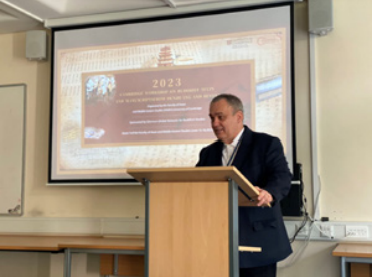
Prof. Imre Galambos from University of Cambridge presented a report entitled “A Dragon-slayer Story from Dunhuang”. The paper examines the significance of the story for local history and also shows how the motif of cutting out the dragon’s tongue played a similar function in cultures outside of China.


